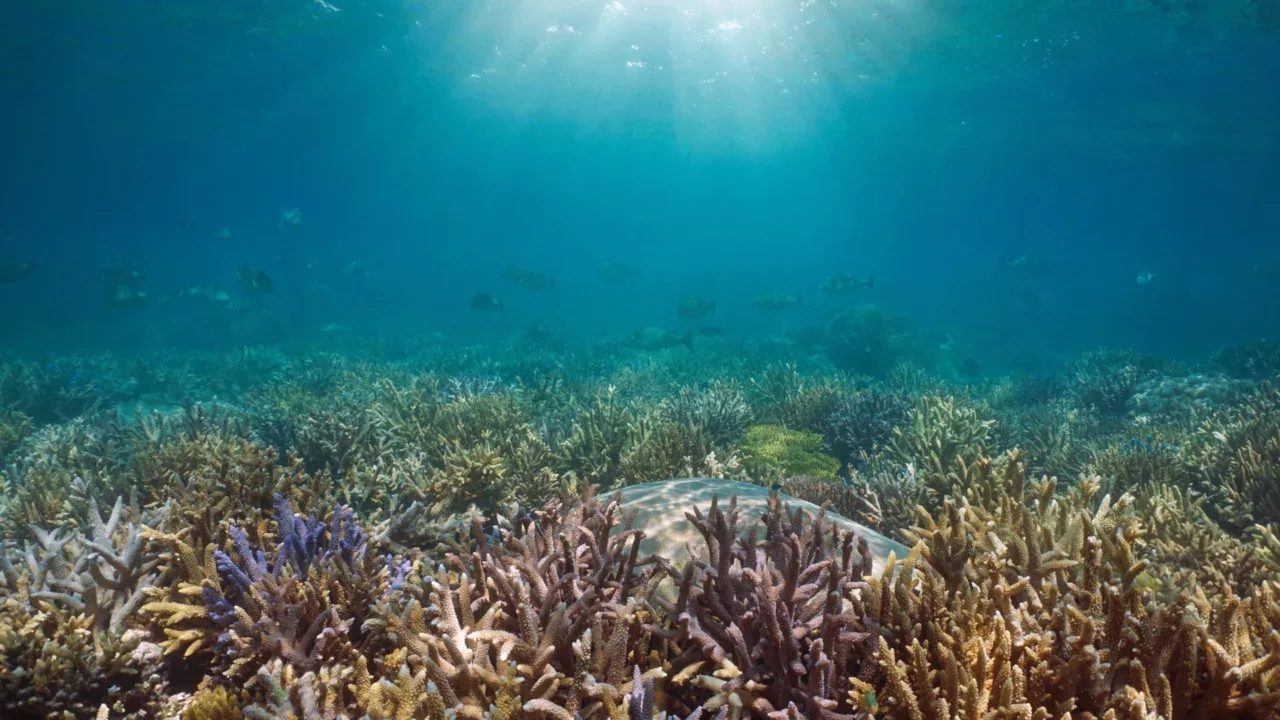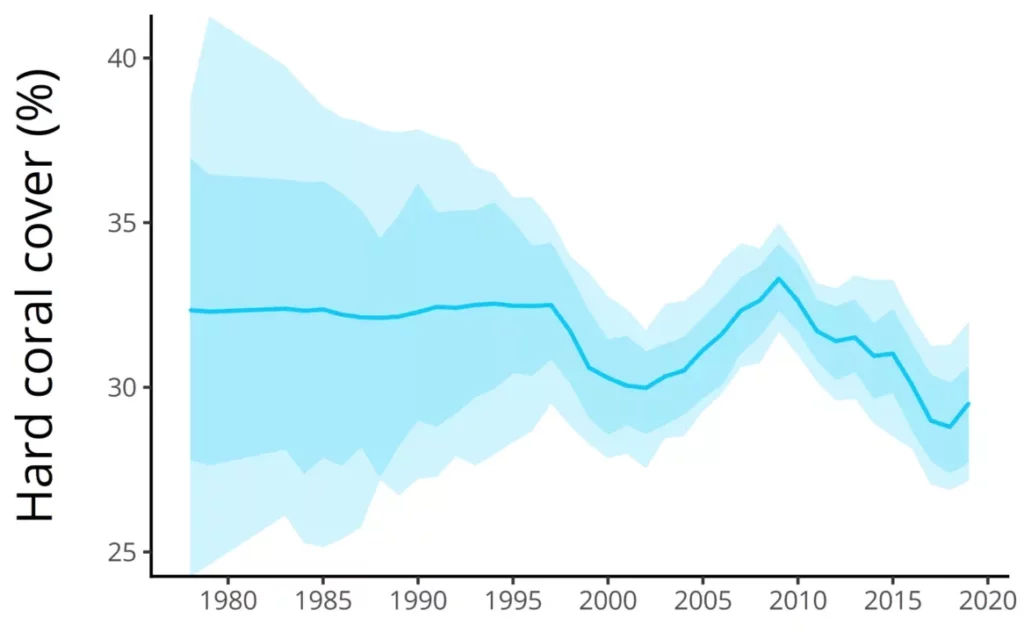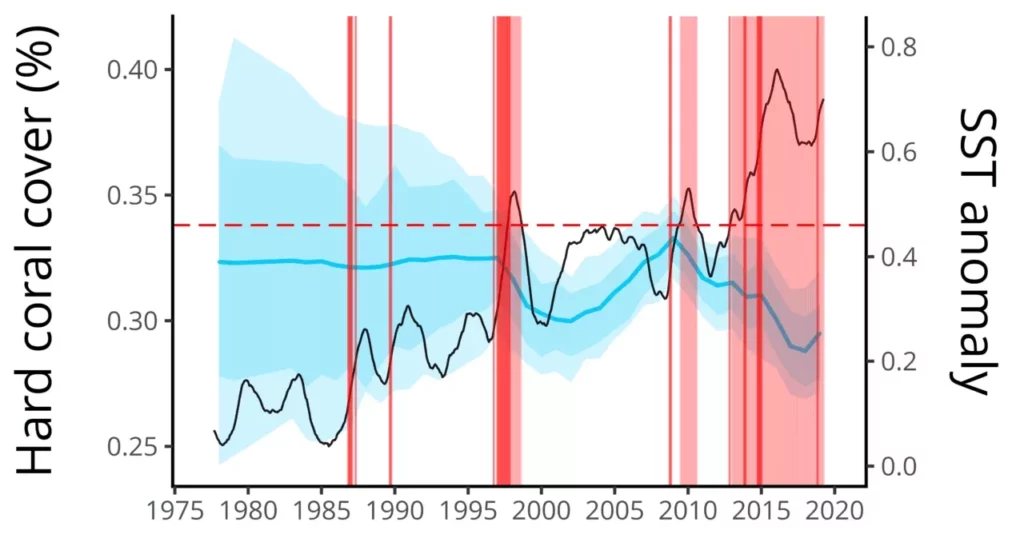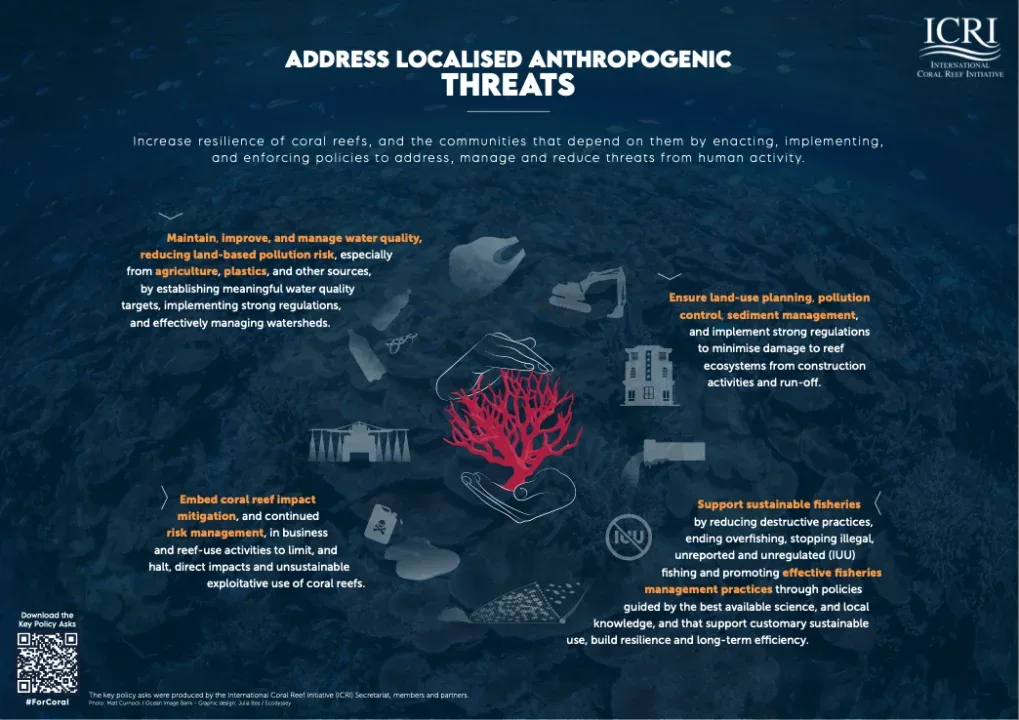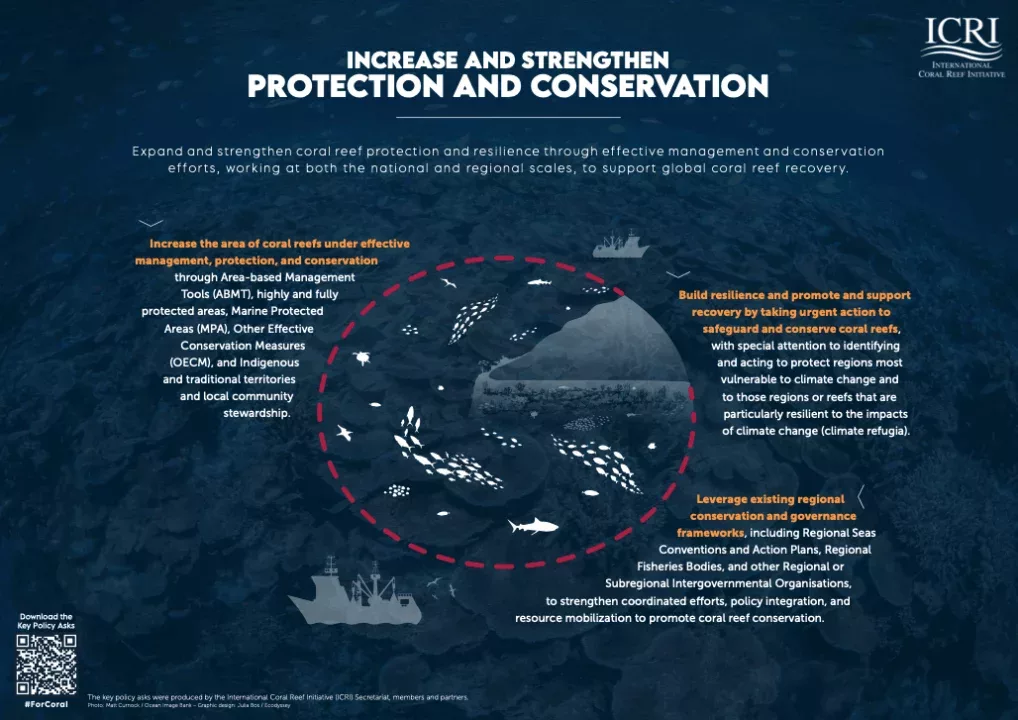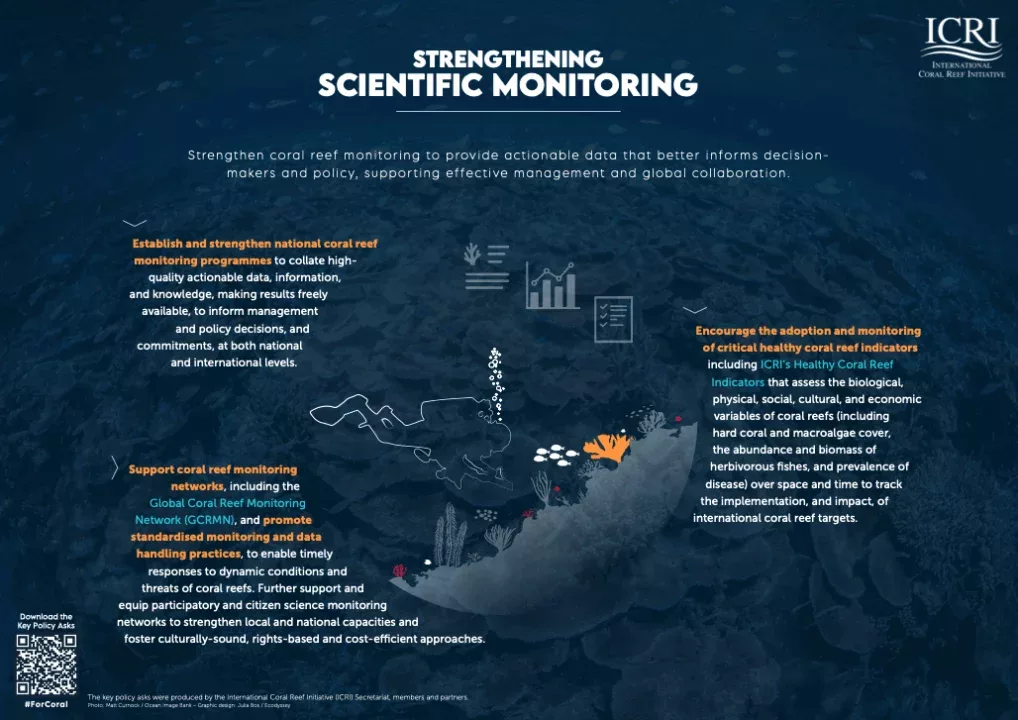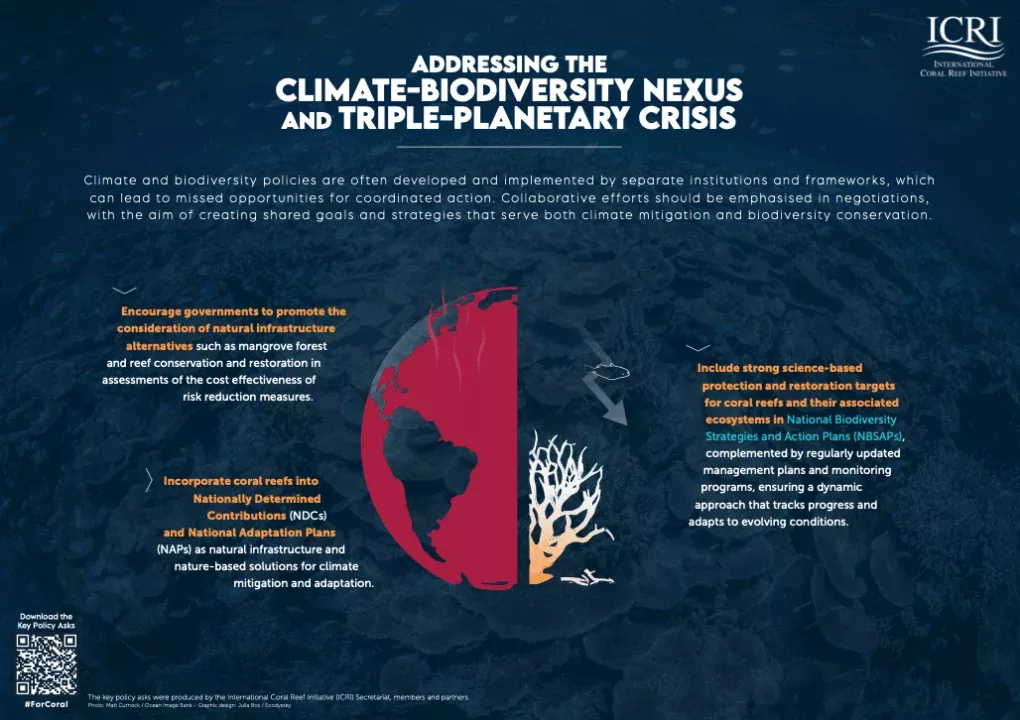The Sustainable Development Goals Report 2025 offers the most comprehensive snapshot to date of global progress towards the 2030 Agenda, and it highlights the urgent situation facing the Ocean, coral reefs, and their associated ecosystems. At the mid-way point of the 2030 agenda, the report finds that only 35% of targets are on track, with SDG 14: Life Below Water among those furthest adrift. Of the 10 targets under SDG14, 40% of targets on in regression, 30% show marginal progress, 10% have made moderate progress and only 20% are on track.
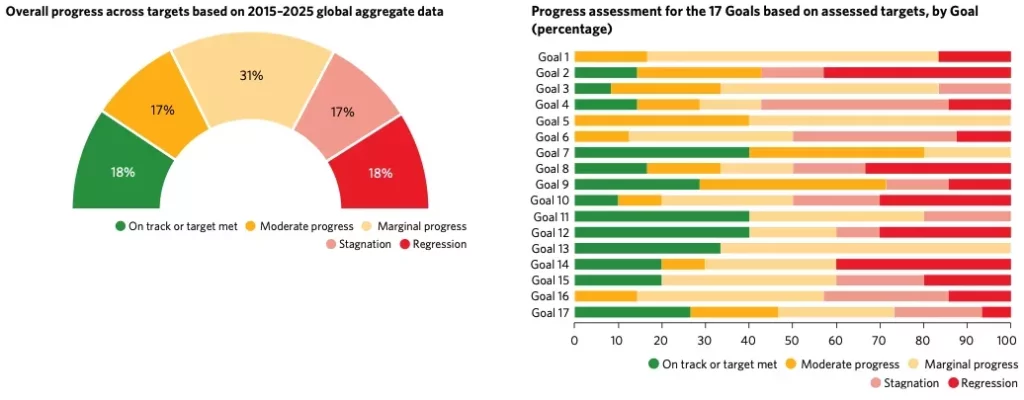
Nowhere is this more starkly illustrated than in the continued pressures facing the world’s coral reefs. Between January 2023 and May 2025, 84% of coral reefs worldwide were exposed to bleaching-level heat stress — the hallmark of the Fourth Global Coral Bleaching Event, announced by ICRI and NOOA in April 2024, which now marks the most extensive and severe ever recorded.
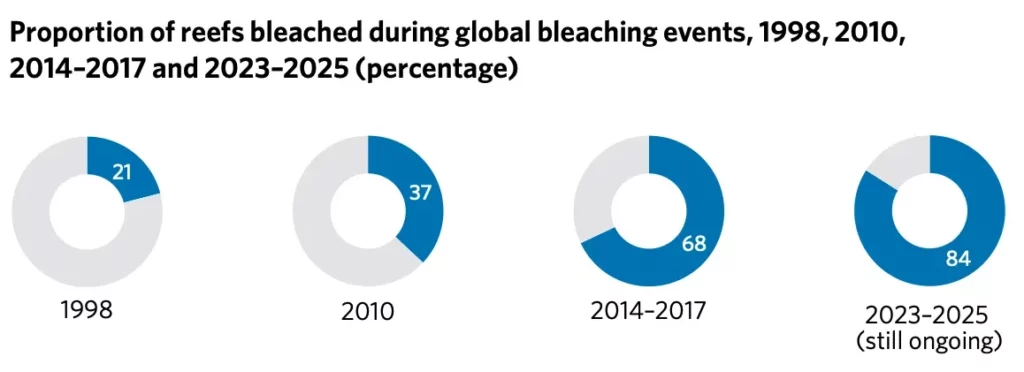
The report reiterates that the pace of ocean warming is accelerating, and the recovery windows for reefs are narrowing. As a result, coral reef health is now both an ecological alarm and a critical indicator of global climate failure, further evidenced by the Global Coral Reef Monitoring Network’s (GCRMN), Status of Coral Reefs of the World: 2020 report, with a 14% decline of hard coral on the world’s reefs from 2009 – 2018 attributed to large-scale bleaching events caused by elevated Sea Surface Temperatures.
But alongside the warning, the report also reflects ongoing efforts to monitor, understand, and reverse coral reef decline — highlighting the importance of long-term datasets, regional coordination, and integrated reporting. These efforts underpin not only SDG 14, but also the growing global momentum around the Coral Reef Breakthrough, launched by ICRI, the GFCR and the UN High-level Climate Champions at the occasion of ICRI’s 37th General Meeting, setting four global goals:
- Stop drivers of loss: Mitigate local drivers of loss including land-based sources of pollution, destructive coastal development, and overfishing.
- Double the area of coral reefs under effective protection: Bolster resilience- based coral reef conservation efforts by aligning with and transcending global coastal protection targets including 30by30.
- Accelerate Restoration: Assist the development and implementation of innovative solutions at scale and climate smart designs that support coral adaptation to impact 30% of degraded reefs by 2030.
- Secure investments of at least USD 12 billion by 2030 from public and private sources to conserve and restore these crucial ecosystems.
Underpinned by the Key Policy Asks for Coral Reefs, released by ICRI in advance of the Third UN Ocean Conference, delivering on these goals, SDG14, and other international targets, including the Kunming-Montreal Global Biodiversity Framework, will require sustained investment, cross-sector collaboration, and the continued generation of robust, long-term data.
The GCRMN is in the midst of developing its next global assessment, the Status of Coral Reefs of the World: 2025 report, with the outputs prised to provide critical support and knowledge to Nations to implement national conservation measures to safeguard coral reefs, achieve their regional and international commitments, and tackling the long-standing challenge of utilisation long-term monitoring data to direct global conservation actions, and policy. Recent releases, including the “Status and Trends of Coral Reefs of the Pacific: 1980 – 2022“, released by the GCRMN in June 2025, further provide evidence on the importance of long-term monitoring for coral reefs to guide decision makers.
While the 2025 SDG Report underscores the challenges ahead, it also affirms the recognition of coral reefs as foundational to ocean health, coastal security and climate resilience. Reaching the 2030 goals will depend, in no small part, on whether the world can shift the trajectory for these critical ecosystems.
Read the full report: https://unstats.un.org/sdgs/report/2025
